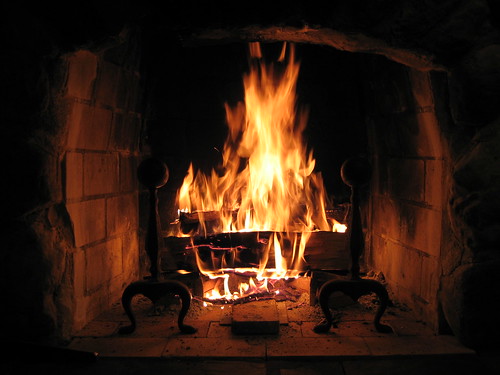Njord Noatun
Super Member
First off, we really don't much heating here right at the beach: Nighttime winter temps lows average in the low '60Fs, and rarely dip below 50F, so if I ever get cold, a sweatshirt and a pair of wool socks usually do the trick. However, my wife gets cold (might be a female thing?) and tends to want to turn up the heating occasionally, and she gets support from our sons.
When I got my house, there was no heat whatsoever installed here (!) except for a plain wood-burning open fireplace, as was typical for the 1940-50's era homes in our neighborhood - they were constructed without heating. I have installed a gas central heater, but sometimes we want that added ambiance, but also heat, generated by the fireplace (wood).
Trouble is, our fireplace practically does not produce any heat at all: The heat goes straight up the chimney, and it only heats once thoroughly warm, and only then if we sit right in front of it, on the floor.
Has anyone here converted an open fireplace with a fireplace insert? What are your experiences? What kind of, or brand, insert should I be looking for? What features should I be looking for? Is the installation cost prohibitive? I can go wood or gas - there already is a (capped and shut off) gas supply to my fireplace.
Thanks for any thoughts.
When I got my house, there was no heat whatsoever installed here (!) except for a plain wood-burning open fireplace, as was typical for the 1940-50's era homes in our neighborhood - they were constructed without heating. I have installed a gas central heater, but sometimes we want that added ambiance, but also heat, generated by the fireplace (wood).
Trouble is, our fireplace practically does not produce any heat at all: The heat goes straight up the chimney, and it only heats once thoroughly warm, and only then if we sit right in front of it, on the floor.
Has anyone here converted an open fireplace with a fireplace insert? What are your experiences? What kind of, or brand, insert should I be looking for? What features should I be looking for? Is the installation cost prohibitive? I can go wood or gas - there already is a (capped and shut off) gas supply to my fireplace.
Thanks for any thoughts.





